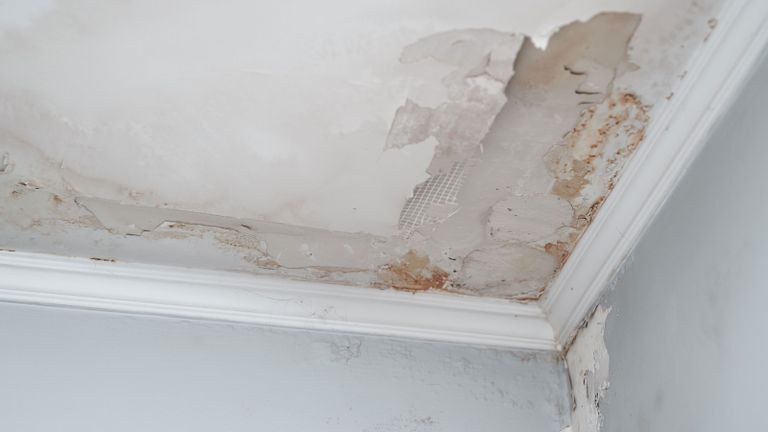6 Water Damage Restoration Do's and Don'ts.
6 Water Damage Restoration Do's and Don'ts.
Blog Article
Presented here in the next paragraph you might get additional exceptional guidance when it comes to 5 Home Safety Tips To Reduce The Risk Of Fire And Water Damage.

Though water gives life, water breach on parts where it's not intended to be can cause damage. If the water saturates right into your framework, it can peel away surface areas as well as wear down the foundation. Mold and also mildew likewise thrive in a damp environment, which can be dangerous for your wellness. Homes with water damages odor mildewy and also old.
Water can come from lots of resources such as tropical storms, floodings, ruptured pipelines, leakages, as well as sewage system issues. In case you experience water damages, it would be excellent to know some safety and security precautions. Right here are a few guidelines on exactly how to manage water damages.
Do Prioritize Home Insurance Coverage Insurance Coverage
Water damages from flooding dues to heavy winds is seasonal. Nevertheless, you can additionally experience a sudden flood when a defective pipeline unexpectedly ruptures into your residence. It would be best to have house insurance policy that covers both disasters such as all-natural tragedies, as well as emergencies like broken plumbing.
Don't Forget to Shut Off Energies
In case of a catastrophe, particularly if you reside in a flood-prone area, it would be a good idea to shut off the primary electric circuit. This cuts off power to your entire residence, avoiding electrical shocks when water comes in as it is a conductor. In addition, do not fail to remember to switch off the primary water line shutoff. When floodwaters are high, furnishings will certainly walk around and create damages. Having the major shutoff shut off stops more damage.
Do Keep Proactive and also Heed Weather Condition Signals
Pay attention to discharge warnings if you live near a creek, river, or lake. Doing so reduces potential residential property damages.
Don't Neglect the Roof
You can prevent rain damages if there are no holes as well as leakages in your roofing. This will protect against water from moving down your walls as well as soaking your ceiling.
Do Take Notice Of Small Leaks
A burst pipeline does not occur over night. You might observe gurgling paint, peeling off wallpaper, water touches, water discolorations, or trickling sounds behind the walls. Have your plumbing repaired before it results in massive damage.
Do Not Panic in Case of a Burst Pipeline
Maintaining your presence of mind is crucial in a time of situation. Because it will stifle you from acting quickly, panicking will just worsen the trouble. When it involves water damage, timing is crucial. The longer you wait, the more damages you can anticipate. Therefore, if a pipe bursts in your house, promptly shut off your major water shutoff to remove the source. After that disconnect all electrical outlets in the location or shut off the breaker for that part of your house. Finally, call a reliable water damage restoration professional for aid.
Water gives life, water intrusion on components where it's not intended to be can result in damages. Homes with water damage smell stuffy and old.
Water damage from flooding dues to heavy winds is seasonal. You might notice bubbling paint, peeling wallpaper, water streaks, water spots, or trickling sounds behind the walls. When it comes to water damage, timing is crucial.
Some Do's & Don't When Dealing with a Water Damage
DO:
Make sure the water source has been eliminated. Contact a plumber if needed. Turn off circuit breakers supplying electricity to wet areas and unplug any electronics that are on wet carpet or surfaces Remove small furniture items Remove as much excess water as possible by mopping or blotting; Use WHITE towels to blot wet carpeting Wipe water from wooden furniture after removing anything on it Remove and prop up wet upholstery cushions for even drying (check for any bleeding) Pin up curtains or furniture skirts if needed Place aluminum foil, saucers or wood blocks between furniture legs and wet carpet Turn on air conditioning for maximum drying in winter and open windows in the summer Open any drawers and cabinets affected for complete drying but do not force them open Remove any valuable art objects or paintings to a safe, dry place Open any suitcases or luggage that may have been affected to dry, preferably in sunlight Hang any fur or leather goods to dry at room temperature Punch small holes in sagging ceilings to relieve trapped water (don't forget to place pans beneath!); however, if the ceiling is sagging extremely low, stay out of the room and we'll take care of it DO NOT:
Leave wet fabrics in place; dry them as soon as possible Leave books, magazines or any other colored items on wet carpets or floor Use your household vacuum to remove water Use TV's or other electronics/appliances while standing on wet carpets or floors; especially not on wet concrete floors Turn on ceiling fixtures if the ceiling is wet Turn your heat up, unless instructed otherwise

I found that content on Keeping Your Home Safe This Holiday Season when doing a search on the internet. Loved our piece? Please share it. Help someone else locate it. We appreciate reading our article about 5 Home Safety Tips To Reduce The Risk Of Fire And Water Damage.
Report this page